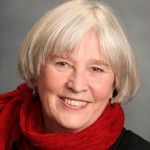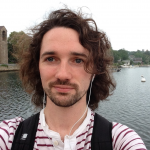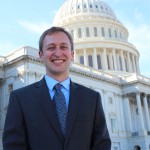In 2014, Bruce Alberts, Marc Kirschner, Shirley Tilghman, and Harold Varmus published an article in PNAS detailing the pitfalls and challenges of the structure of the biomedical workforce. Though many have written about and discussed these problems before, people seemed to pay attention to the conversation this time. Scientists at all stages of their careers started having discussions, planning workshops, writing papers – they got involved.
The 2014 article described the perpetual disequilibrium of the biomedical science workforce pipeline: it generates “an ever-increasing supply of scientists vying for a finite set of research resources and employment opportunities.” In the traditional academic path, students earn PhDs, complete postdoctoral fellowships, and go on to secure tenure-track faculty positions. But it’s become increasingly clear that simply not enough traditional tenure-track faculty jobs exist for the number of new PhDs – by a huge margin.
The past two years have produced a wealth of ideas on how to “turn the Titanic” of biomedical research in the US. The time is ripe for young scientists to help grab the ship’s wheel. To get an idea of how things are progressing and ways graduate students and postdocs can get involved, Genes to Genomes spoke with some of the community leaders who are making waves and pushing for change.
Identifying problems and brainstorming solutions

Shirley Tilghman
“When the number of people outstrip the number of resources needed to support them, you hit a critical point. Clearly in biomedical science, we’re way beyond that critical point,” says Shirley Tilghman, former president of Princeton University and 2007 recipient of the GSA Medal.
“Becoming a faculty member is actually an alternative career. It’s not the mainstream anymore. One of the problems is that we are continuing to train graduate students and postdocs as though that’s the only option. The fact that we are still doing that blows my mind because I was talking about this problem 20 years ago! We could see where the train was headed, but because that was followed by a time when the NIH [budget] was essentially doubling, you couldn’t get anyone to pay attention.”
Alberts et al. outlined what they saw as the sources of this current dilemma and made specific recommendations for attempting to course-correct. In August of 2014, they held a meeting where around 30 scientific leaders discussed the problems and solutions identified in the initial paper, leading to a second paper. Most everyone agreed that the problem is real, although there were many differing opinions on the right course of action.

Judith Kimble
For example, Judith Kimble, an HHMI investigator at the University of Wisconsin–Madison who served as GSA President in 2000, had some reservations about the solutions presented.
“The Alberts et al. PNAS paper had just come out, and there was concern about the kinds of specific proposals they were putting forward. The problem was clearly important, but the solutions they were suggesting were a mix of good/bad/great/terrible. They were four people who hadn’t been having this conversation across the board with a fully engaged community,” says Kimble.
Kimble co-organized a workshop held at UW–Madison in the spring of 2015 that brought together different voices from across the biomedical workforce to discuss the problems and to offer up solutions. The conclusions, published last summer, emphasized the idea of “turning the Titanic instead of capsizing it.”
“I like the fact that in our workshop, we had representatives from every level. We had leadership teams led by people who ranged in status from grad students to med school deans. We were able to galvanize a cross-campus conversation and listen to each other and work together to try and figure out what we can do that actually might make a difference,” Kimble says.
Young scientists lead the way
One thing seems true: the way someone views the immediacy and looming threat of an unchanged biomedical workforce often differs depending on their place in the hierarchy.
According to Tilghman: “The conversations that I’ve had over the last two or three years with grad students and postdocs are completely different from the conversations I’ve had with faculty – particularly successful senior faculty. When only students and fellows are in the room, the conversation is very different from when faculty are also in the room.”
Trainees who have their entire career ahead of them feel the weight of a failing system in a way that scientists who have succeeded under the existing paradigm sometimes don’t appreciate. Graduate students and postdocs have an important voice in the discussion about changes to the future of the workforce – they are the future workforce.
“What can students and fellows do? I think there are a number of really promising signs. The one I’m most admiring is Future of Research. They really want to turn this into a national movement that is being driven by the voices of students and fellows,” says Tilghman.

Gary McDowell
GSA member Gary McDowell, one of the founders of Future of Research (FoR) and a postdoc at Tufts University, says the group originally started because postdocs in the Boston area (including co-founders Jessica Polka and Kristin Krukenberg) wanted to discuss the Alberts et al. paper so that a younger audience could respond. In 2014, they held a postdoc-run meeting in Boston and wrote a paper summarizing their discussions.
“We wanted to have young scientists come together and not just talk about the problems, but to try and actually come up with things that we felt people could do at different levels – what we could do ourselves, what institutions could do, what federal funders could do, what senior faculty could do,” says McDowell.
Since the initial Boston meeting, FoR has held meetings in Chicago, New York, and San Francisco, and they’re hoping to continue setting up chapters all across the country and in Canada. They’re in the process of establishing a non-profit to help fund new chapters and meetings and to offer logistical support and infrastructure. FoR is also interested in gathering data and disseminating information to those considering a PhD in the biomedical sciences, to help these younger scientists make informed decisions.
McDowell is very excited about this prospect, saying:
“We’d really like to produce a booklet that would be online – but also distributed to community colleges, universities, maybe even high schools – that gives a guide of how people can get into science and what it means to be a scientist in all kinds of ways, not just in academic research. It’s time to educate people a bit more on what the realities are and try to use that to advocate for change.”
Examining what it means to earn a PhD in the biomedical sciences is likely to be an important piece of the puzzle as the scientific community moves towards a new training paradigm. Graduate students working towards degrees in this uncertain employment climate sometimes ask themselves whether this process is worth it; it’s up to the biomedical research community to help prospective scientists understand the value of a PhD beyond its ability to feed a person into the academic pipeline.
Full-time work on a full-time problem
The Alberts et al. paper also led to the establishment of Rescuing Biomedical Research (RBR), an organization focused on the future of biomedical research. RBR has just hired Chris Pickett as its director. A former C. elegans researcher and GSA member, he most recently served as a policy analyst for the American Society for Biochemistry and Molecular Biology (ASBMB). Last year, he wrote a paper on the subject that served as a catalyst for a 2016 ASBMB meeting focused on generating action items that would would move the research enterprise onto a sustainable path.

Chris Pickett
Pickett was drawn to RBR because it is “the only group focused solely on addressing the sustainability problems of the research enterprise.” He sees that conversations are happening and that ideas are being tossed around, but he’s ready to help RBR lead the way in drawing up specific action plans and following through with them.
Pickett also understands the importance of trainees getting involved:
“Young scientists have a very important perspective. Major changes to training and the structure of the workforce will affect trainees most of all. Read up on the issues! If you go to a scientific meeting, look for sessions that discuss the sustainability issues you are interested in. Find meetings specific to the conversations around reform.”
McDowell notes that the response to the young scientists speaking up through FoR has been extremely positive: “The bottom line is that we’re a bunch of grad students and postdocs. People really seem to be listening to what we’re doing! We’ve gained a lot of respect from various different groups. It’s kind of crazy!”
Complex problems, thoughtful solutions
What are some of the solutions being talked about? That’s what these community leaders are pouring so much effort into, but a few possibilities stand out: more staff scientist positions and core facility jobs, to start.
Tilghman asserts: “I’m a firm believer in the role staff scientists can play in the future, and in the expanded use of core facilities. Universities are going to have to spend some time thinking about career paths for those individuals – how to make it possible for people to see these as terrific, creative, stimulating positions that they could take and imagine making into a life’s work.”
FoR is planning to look into a larger role for staff scientists as well. “We want to research certain things like, ‘Are staff scientists a viable option?’ That is a really interesting question. What are the incentives to having staff scientists? That kind of thing,” says McDowell.
Kimble thinks instituting a mandatory Master’s degree as part of the PhD process could help students take control of their futures and make informed decisions at an earlier stage. A Master’s degree could serve as a point of reflection.
“There’s been a culture shift among graduate students in that they realize that getting a PhD is incredibly valuable, but it doesn’t have to lead into a postdoc,” says Kimble. “A PhD has tremendous value, but it’s not for everybody. One recommendation we made was for every PhD student to get a Master’s degree. At that point, they would have to ask themselves, ‘Is this what I want? Will this develop skills that are important?’ I think having that milestone is really important to introduce into PhD programs.”
Tilghman highlights a solution put forward at the recent ASBMB meeting: rethinking the graduate curriculum.
“One of the recommendations was to create a central clearinghouse for developing curriculum that is more appropriate for graduate education in the 21st century. We’ve got to be thinking about basic nuts and bolts like curriculum. What kind of activities really broaden the scope of graduate students as they’re looking towards their future careers? What are the kinds of things that don’t work, that we shouldn’t be doing?”
One opportunity to get involved with the conversation about education is an upcoming meeting hosted by the National Institute of General Medical Sciences. While the purpose of the meeting isn’t to address the larger sustainability issues of biomedical training, it is focused on “continuing the momentum for positive change within the biomedical graduate education community.” The meeting will be held in Bethesda, MD and broadcast online (where it will be archived for future viewing). Individuals who are interested in participating can watch the live broadcast and ask questions/make comments by using the hashtag #modernPhD on Twitter or emailing modernphd@mail.nih.gov.
And while not everyone can be a policy expert, staying in contact with Senators and Representatives to emphasize the importance of sustained federal funding for biomedical research is something everyone can do.
Avoiding the iceberg
Since the Alberts et al. paper was published, three things seem to be proving true. Conversations are happening, many people are optimistic about the future, and it’s going to take a lot of work and a lot of time to fix a problem that’s been brewing for the better part of four decades.
“I think the Titanic is turning – there’s no doubt the Titanic is turning! But it’s going to be a slow process,” says Kimble.
Tilghman agrees that the conversations happening will lead to substantive change. She’s more positive than she was even two or three years ago.
“I think we have a long way to go, but I’m cautiously optimistic that some of the changes that we were recommending are actually going to happen.”
The Titanic of biomedical research is a large ship, and it’s been moving toward the iceberg for a long time now. However, collision is far from inevitable; it’s going to take time and effort, but we as a community are capable of adjusting course and sailing on to clear waters.
You can find many of the organizations and people mentioned in this article on Twitter:
Rescuing Biomedical Research @resbiom
Chris Pickett @chrispickett5
Future of Research @FORsymp
Gary McDowell @BiophysicalFrog
Jessica Polka @jessicapolka
Sarah Bay @_sbay
CITATIONS
Alberts, B., Kirschner, M.W., Tilghman, S., Varmus, H. 2014. Rescuing US biomedical research from its systemic flaws. PNAS, 111(16): 5773-5777. doi: 10.1073/pnas.1404402111 http://www.pnas.org/content/111/16/5773.long
Alberts, B., Kirschner, M.W., Tilghman, S., Varmus, H. 2015. Addressing systemic problems in the biomedical research enterprise. PNAS, 112(7): 1912-1913. doi: 10.1073/pnas.1500969112 http://www.pnas.org/content/112/7/1912.long
Kimble, J., Bement, W.M., Chang, Q., Cox, B.L., Drinkwater, N.R., Gourse, R.L., Hoskins, A.A., Huttenlocher, A., Kreeger, P.K., Lambert, P.F., Mailick, M.R., Miyamoto, S., Moss, R.L., O’Connor-Giles, K.M., Roopra, A., Saha, K., Seidel, H.S. 2015. Strategies from UW-Madison for rescuing biomedical research in the US. eLife, 4:e09305. doi: 10.7554/eLife.09305.001 http://elifesciences.org/content/4/e09305v1
McDowell G.S., Gunsalus K.T.W., MacKellar D.C., Mazzilii, S.A., Pai, V.P., Goodwin, P.R., Walsh, E.M., Robinson-Mosher A., Bowman, T.A., Kraemer, J., Erb, M.L., Schoenfeld, E., Shokri, L, Jackson, J.D., Islam, A., Mattozzi, M.D., Krukenberg, K.A., Polka, J.K. 2015 Shaping the Future of Research: a perspective from junior scientists. F1000Research, 3:291. doi: 10.12688/f1000research.5878.2 http://f1000research.com/articles/3-291/v2
Pickett, C.L., Corb, B.W., Matthews, C.R., Sundquist, W.I., Berg, J.M. 2015. Toward a sustainable biomedical research enterprise: Finding consensus and implementing recommendations. PNAS, 112(35): 10832-10836. doi: 10.1073/pnas.1509901112 http://www.pnas.org/content/112/35/10832.full













